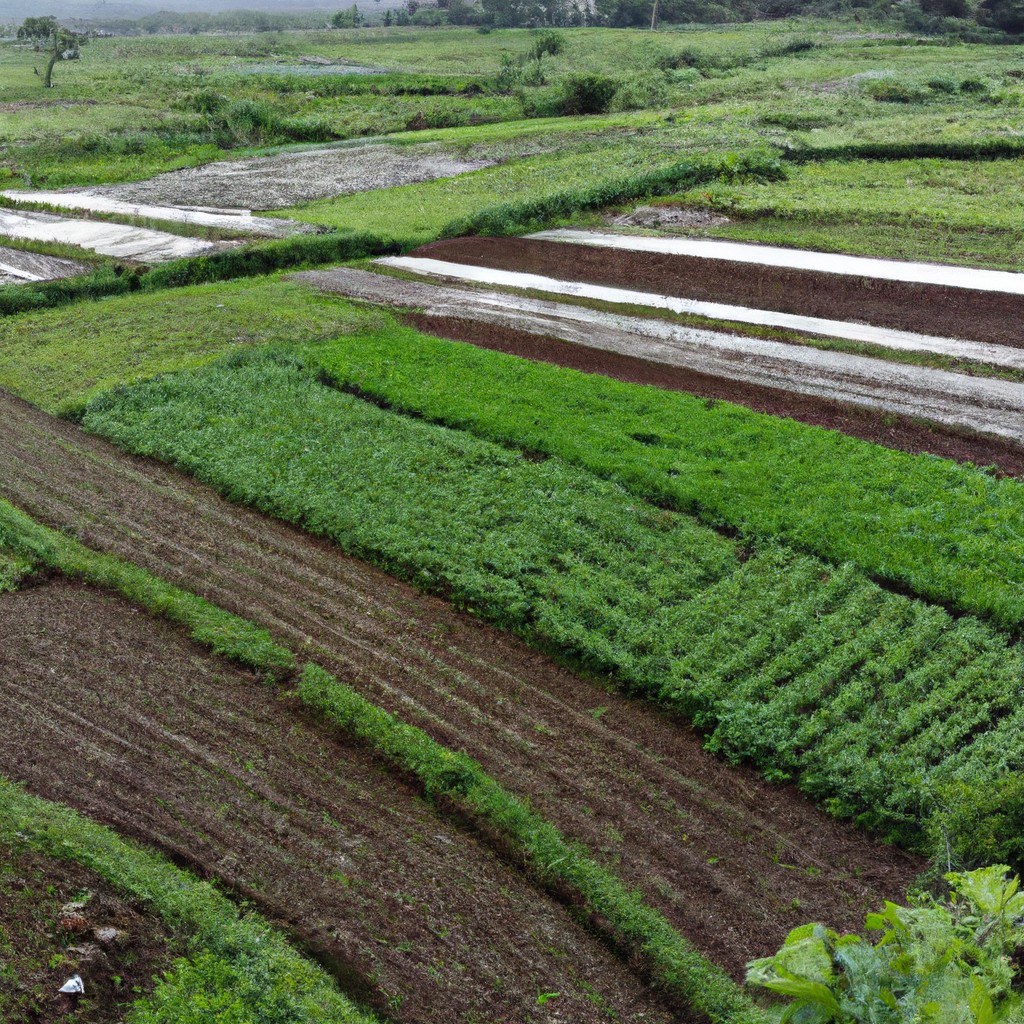In this article, we clarify the distinctions between horticulture and agriculture, providing insight into their respective roles in food production and environmental stewardship.
Look Inside:
Horticulture Vs. Agriculture: An Overview

Horticulture and agriculture are essential sectors within the broader field of plant cultivation and food production. Yet, they focus on different areas and methods. The fundamental distinction lies in the scale, diversity, and purpose of cultivation. Horticulture primarily centers on small-scale gardens and greenhouses, where intensive care is paramount. It specializes in a wide range of plants such as fruits, vegetables, flowers, and ornamental trees, emphasizing quality and variety.
In contrast, agriculture operates on a larger scale, often synonymous with farming, and encompasses the production of a vast array of food and fiber crops, including grains, pulses, livestock, and other raw materials. It aims for higher yields to meet the food and textile needs of the global population. Modern agriculture may employ various technologies ranging from simple tools to advanced machinery and biotechnology, emphasizing efficiency, and productivity.
Understanding these sectors helps clarify the roles they play in food systems, consumer choices, and career opportunities, shaping how we approach sustainable practices within each realm.
Difference Between Agriculture and Horticulture
Agriculture encompasses the cultivation of crops and rearing of animals for food, fiber, and other products used to sustain and enhance human life. It is a broad sector that covers extensive farming practices aimed at bulk production. Horticulture, on the other hand, is a branch of agriculture focused on growing plants for food, materials, comfort, and beauty. It generally pertains to smaller-scale gardens and cultivation areas.
While agriculture can be categorized into different types such as arable farming, pastoral farming, and mixed farming, horticulture is specifically divided into disciplines like pomology (fruit cultivation), olericulture (vegetables), floriculture (flowers), and landscape horticulture. Agricultural systems often emphasize quantity and efficiency to meet global demands, while horticultural pursuits tend to pay closer attention to the quality and specialized care of their products.
In agriculture, larger machinery and technological systems are often utilized to maintain extensive crop fields and manage livestock herds, leading to a greater focus on mechanization and innovation in farming practices. Conversely, horticulture usually involves more detailed, hands-on methods and often integrates principles of landscape design and plant conservation. Despite their differences, both sectors continuously adopt sustainable practices to ensure long-term productivity and minimal environmental impact.
Horticulture and Agriculture Careers
Career options in both horticulture and agriculture are diverse and rewarding, offering opportunities to work directly with the land and contribute to food production and environmental sustainability.
Horticulturists typically focus on plant breeding, crop yield improvement, and aesthetic landscape design. As such, they might find roles in botanical gardens, nurseries, or landscape companies, often as gardeners, breeders, or greenhouse managers.
Agriculture careers, on the other hand, might involve working on larger scale farms, with an emphasis on food crops, livestock, and the overall management of agricultural operations. Career paths in this field include farm managers, agronomists, and agricultural scientists, with roles often centered on ensuring food security and efficient farm management.
Both fields offer specialization options for individuals interested in research and development, education, or the commercial business aspects of plant and animal production. Engagements might range from roles in universities as educators to being agribusiness consultants or policy advisors working with governments or international bodies to shape future farming practices.
Cross-disciplinary opportunities also exist, particularly in sustainable and regenerative farming practices, where the knowledge from both horticulture and agriculture can be leveraged to create systems that are productive, environmentally friendly, and socially responsible. Those interested in technology may venture into agricultural technology roles, where they develop or implement new technologies to optimize plant and animal production efficiency.
The Bottom Line On Horticulture Vs. Agriculture
While both horticulture and agriculture are vital for human sustenance and the economy, they cater to different aspects of crop production and management. Horticulture primarily focuses on the science and art of cultivating plants for food, materials, comfort, and beauty. It encompasses a diverse range of plants and often involves intensive, specialized operations targeting the optimization of yield for particular plants.
On the other hand, agriculture broadly refers to the practiced art and science of cultivating soil, growing crops, and raising livestock. It is viewed more expansively, potentially encompassing a wide variety of cultivation techniques, livestock care, and ecological considerations. Agriculture serves as the backbone for large-scale food production necessary to feed the global population.
The methods used in horticulture and agriculture also differ in scale, tools, and approaches to sustainability and environmental impact. For example, horticultural methods might place more emphasis on precision, often in controlled environments like greenhouses, whereas agricultural practices might focus on maximizing land usage and crop outputs.
Both fields integrate technology and innovation to improve efficiency and outcomes, yet they might prioritize different research areas. Horticulture might explore genetic crop enhancements to bolster aesthetics or flavor, while agriculture might concentrate on advancements in machinery or drought-resistant crops.
In summary, horticulture and agriculture both play crucial roles in our food systems and environment, each with a unique scope, techniques, and end goals. Understanding the nuances between these two sectors is vital for aspiring professionals, policymakers, and consumers who influence the future of sustainable and regenerative food production.




